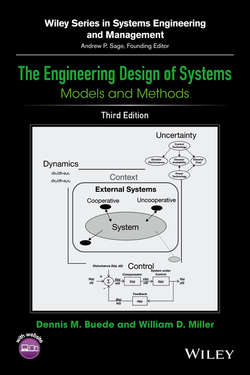Описание книги
New for the third edition, chapters on: Complete Exercise of the SE Process, System Science and Analytics and The Value of Systems Engineering The book takes a model-based approach to key systems engineering design activities and introduces methods and models used in the real world. This book is divided into three major parts: (1) Introduction, Overview and Basic Knowledge, (2) Design and Integration Topics, (3) Supplemental Topics. The first part provides an introduction to the issues associated with the engineering of a system. The second part covers the critical material required to understand the major elements needed in the engineering design of any system: requirements, architectures (functional, physical, and allocated), interfaces, and qualification. The final part reviews methods for data, process, and behavior modeling, decision analysis, system science and analytics, and the value of systems engineering. Chapter 1 has been rewritten to integrate the new chapters and updates were made throughout the original chapters. Provides an overview of modeling, modeling methods associated with SysML, and IDEF0 Includes a new Chapter 12 that provides a comprehensive review of the topics discussed in Chapters 6 through 11 via a simple system – an automated soda machine Features a new Chapter 15 that reviews General System Theory, systems science, natural systems, cybernetics, systems thinking, quantitative characterization of systems, system dynamics, constraint theory, and Fermi problems and guesstimation Includes a new Chapter 16 on the value of systems engineering with five primary value propositions: systems as a goal-seeking system, systems engineering as a communications interface, systems engineering to avert showstoppers, systems engineering to find and fix errors, and systems engineering as risk mitigation The Engineering Design of Systems: Models and Methods, Third Edition is designed to be an introductory reference for professionals as well as a textbook for senior undergraduate and graduate students in systems engineering.
